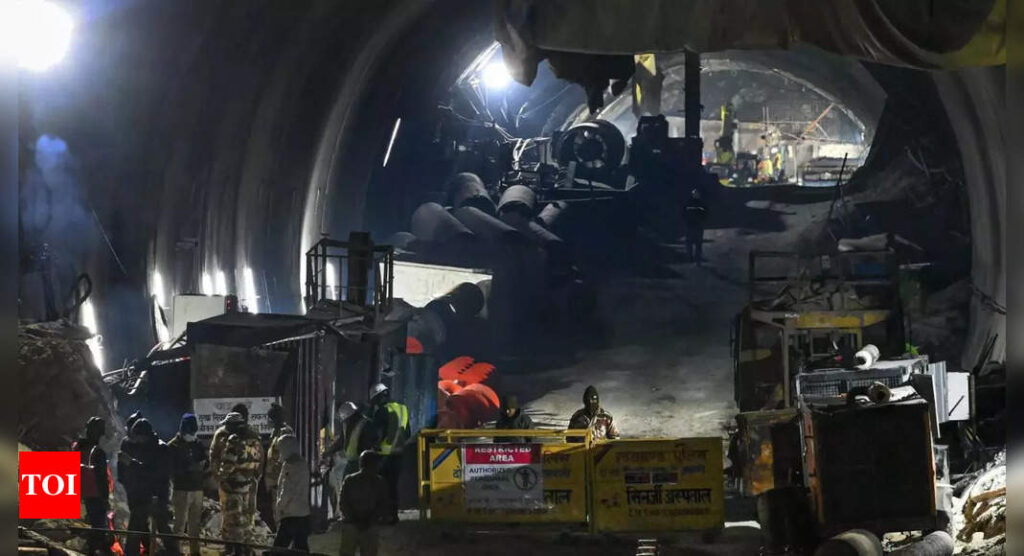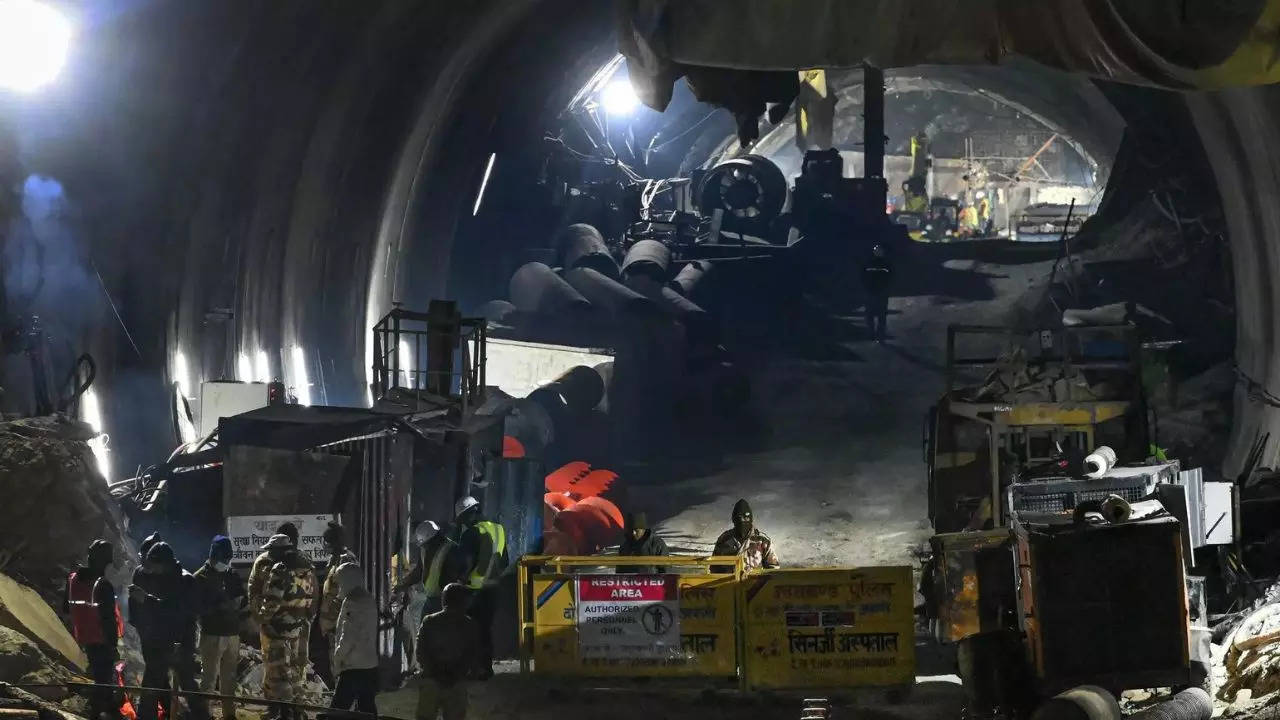[ad_1]
In view of the back-to-back hiccups in drilling, rescue teams late Friday decided to change strategy and go for a mixed approach by getting workers to remove debris manually and make a way for the machine to push the 900mm pipes further, so that the last leg of the rescue can be successfully accomplished.The auger machine had been out-of-operation earlier too, for more than 24 hours after encountering a snag on Thursday.
An official closely involved in the operations, who did not wish to be named, told TOI, “Workers of a private company ‘Trenchless’ will go inside the escape passage for clearing the metal obstructions and removing the debris, which will be pulled out in small wheeled trolleys.” He added that the workers had been mobilised and they will begin work around midnight.
Uttarkashi tunnel collapse: Everyone is fine inside and there are facilities, says brother of a trapped worker
While one worker is expected to spend two hours or so in the narrow 3-feet opening and then come out, a replacement will then dig and complete the task. “This seems to be the most feasible option. This technique has been used for years and it should work for reaching the last few metres,” a source involved with the exercise told TOI.
Another official added that “the role of the auger machine will now no longer be drilling but instead, it will be used in pushing the pipes into the debris once the way is cleared by the men.” He further said that because of the mixed approach being adopted, the time taken to reach the trapped workers may range from 15 to 18 hours depending on how fast the debris is removed by the team.
“The rescue timeline depends on any obstacles that may come in the way of drilling,” NDMA member Lt Gen (retd) Syed Ata Hasnain said at the official briefing.
The machine could only operate for around an hour in the evening on Friday before showing sluggishness which was subsequently found to be due to the presence of iron frames and metal girders in its path. This happened when 10-12 metres of drilling was still left to reach the workers, sources said.
To check the presence of any further obstacle, a ground penetration radar (GPR) test has been done. Neeraj Khairwal, senior IAS officer, who is nodal officer appointed by the state government for the rescue operation, had said that “the report of the GPR showed that there is no metallic obstruction in the next 5.4m in the debris.” Experts told TOI that the GPR test is not always conclusive since it may not detect the presence of smaller objects in the path.
The government reiterated that alternative options remain on the table. As part of the exercise, a fourth blast was undertaken on the Barkot side of the tunnel, creating a drift of 9.1m (around 30 feet).
(With inputs from Dipak Dash)
[ad_2]
Source link











More Stories
Congress replaces Kamal Nath, names an OBC as Madhya Pradesh chief | India News
Fire breaks out in ITBP camp in Srinagar; none hurt | India News
Parliament Security: Co-villagers give clean chit to Lalit Jha, parents to move court | India News